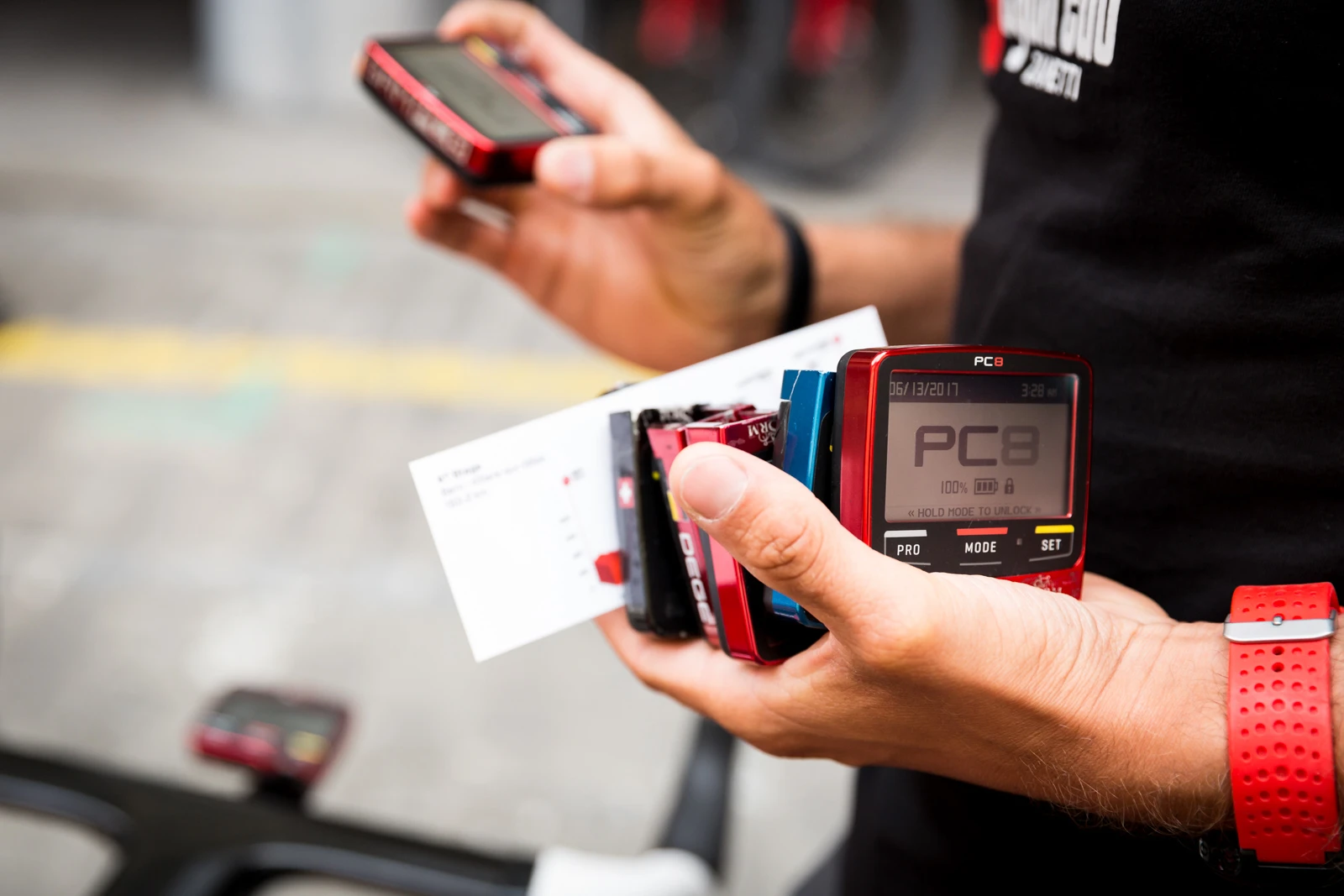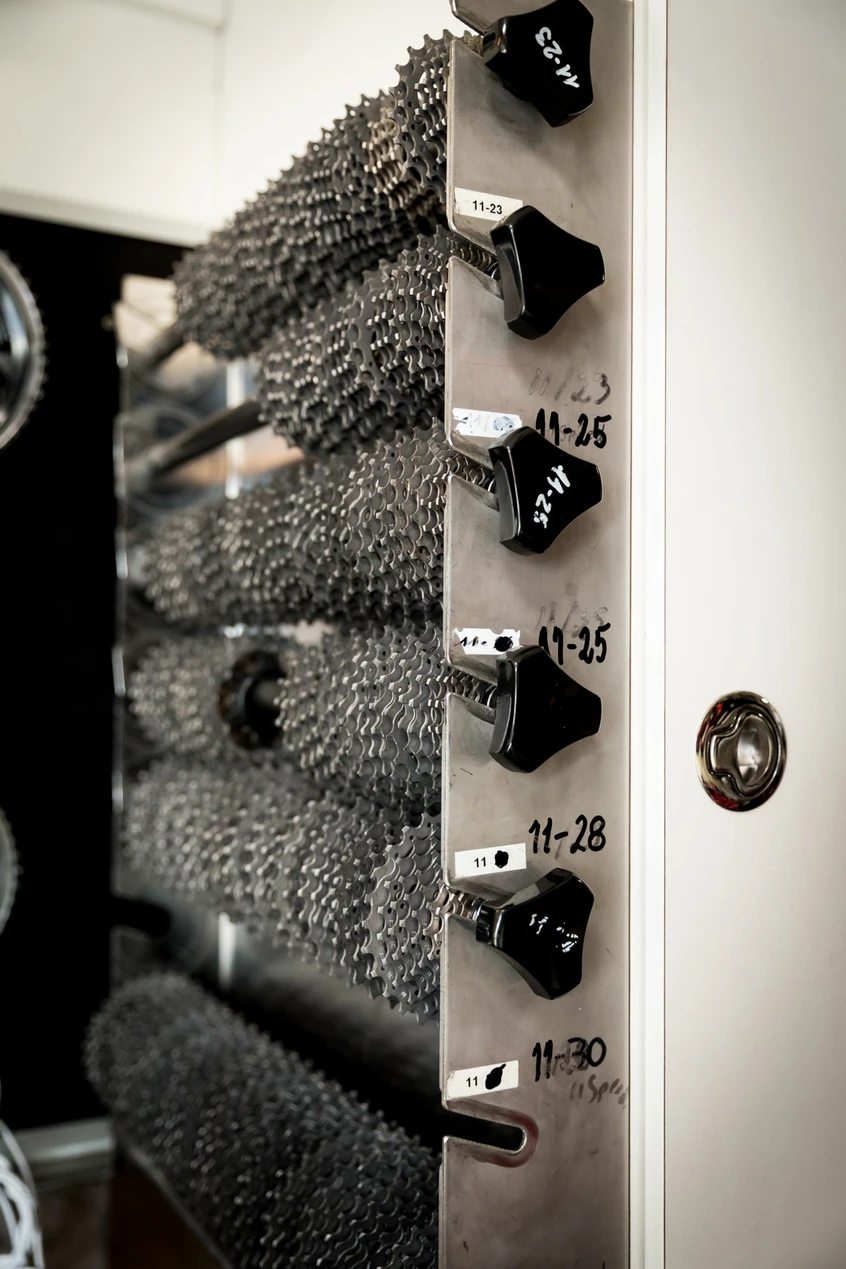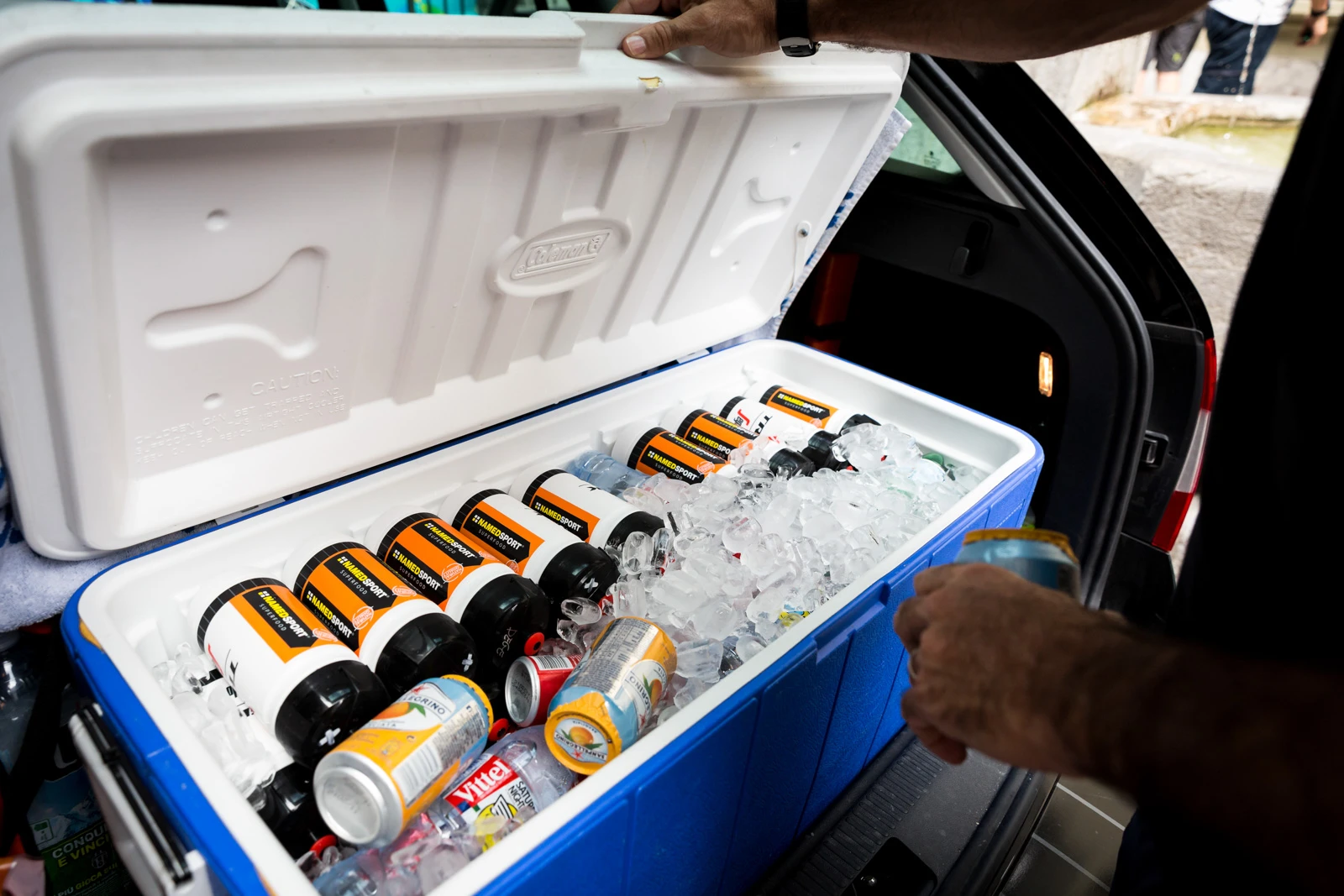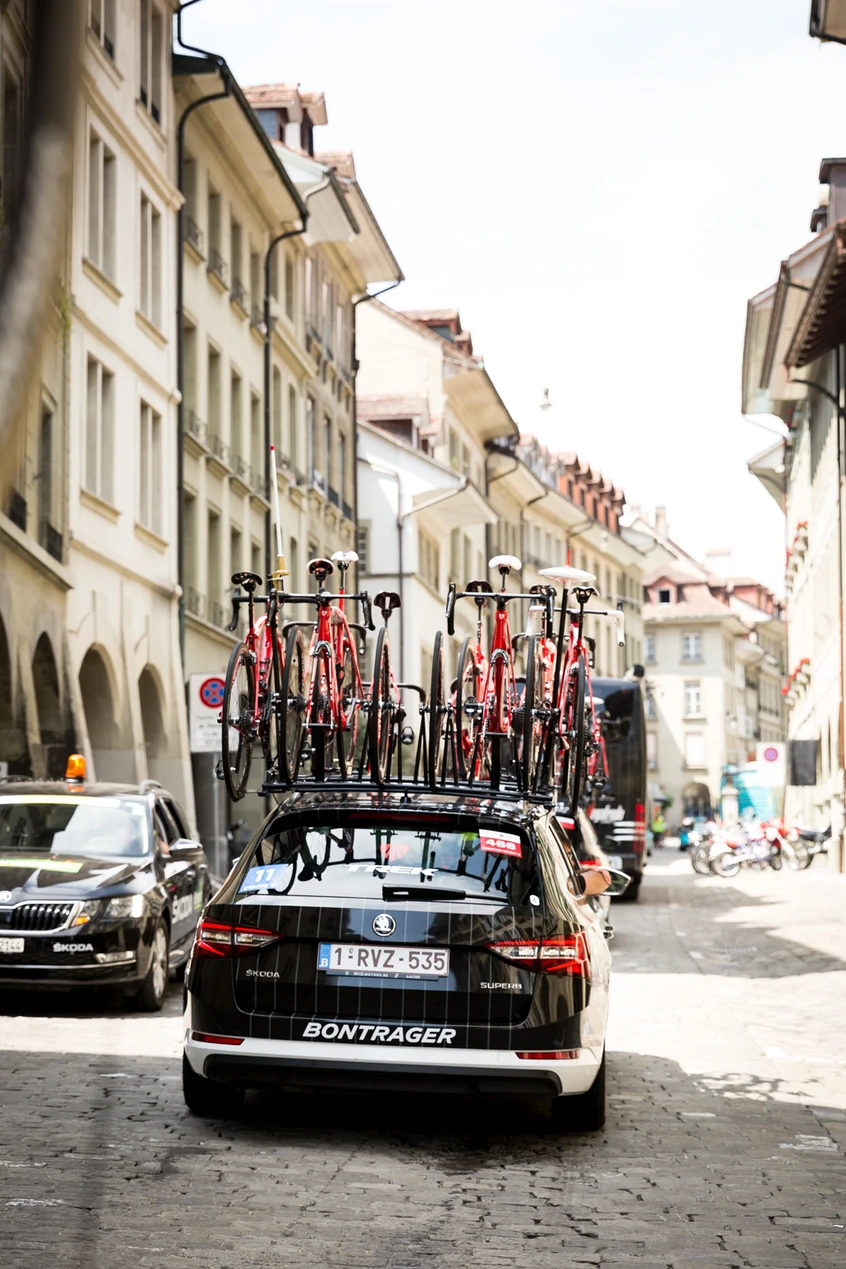Words/Images: Cam Mackenzie
It’s the finish of stage three of the 2017 Tour de Suisse. Michael Matthews of Giant Sunweb has attacked with 150 meters to go on a hectic uphill finish and has just crossed the line in first after a gruelling 159kms. Behind him Peter Sagan was second, while the closest Trek Segafredo rider John Degenkolb was duelling for third.
With all eyes focused on the big names of cycling, few are aware of all the work that has gone on behind the scenes – often during the wee small hours – to get the leading riders across the line. However, earlier this year I had the rare opportunity to see first-hand the effort put in by the team, from fellow riders to the directeur sportif , mechanics, chefs and soigneurs that got the stars into that position.
My assignment got off to a frantic start – trying to sort out the train stop announcements in French, jumping the connecting train without paying for a ticket because I couldn’t work out how to purchase a ticket! However, I knew it was nothing compared to what lay ahead for the team behind the team of Trek Segafredo.
I was greeted outside Bern-Westside station by legendary cycling writer Matt Rendell, Trek Segafredo’s communications manager during the Tour de Suisse. I dropped my bags, grabbed my notebook and donned my camera ready to rip into action as the team buses started pulling up in the hotel carpark.
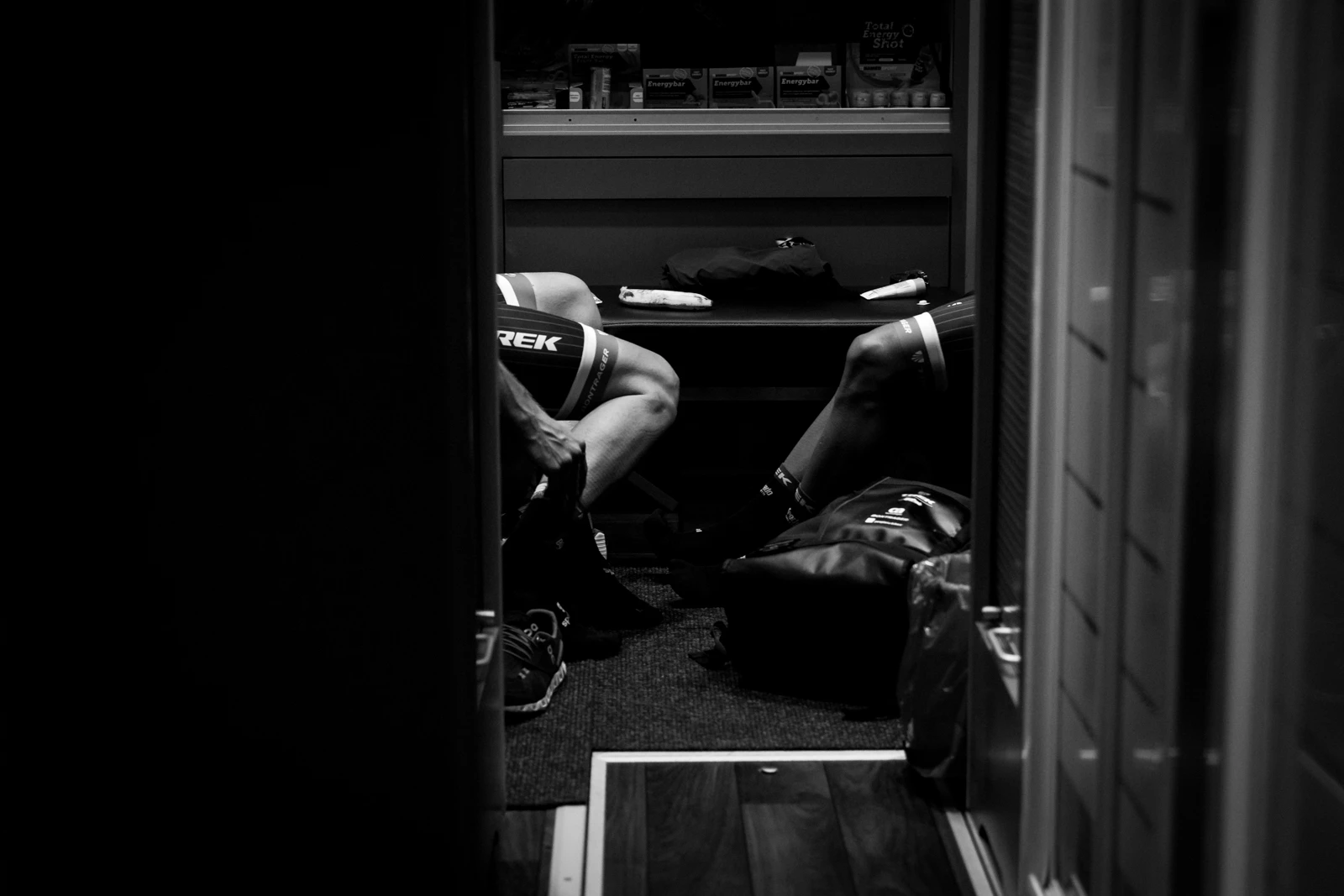
I could have read as many articles as I liked about the chaos I was about to be caught up in, but nothing prepared me for seeing it all play out in person. The first three stages of the Tour de Suisse had thus far been fairly uneventful. John Degenkolb was quick to throw in his two cents worth, describing it as ‘boring as all shit’ as the team mechanics, Glenn and Pepigno got to work sorting the bikes for the next day.
The roster consisted of eight riders, so the wrenches each had four bikes to work through.
Trek Segafredo have full access to both Trek and Bontragers’ catalogues, but for the 2017 Tour de Suisse campaign, opted for the Madone as the tour wasn’t very mountainous.
Up until stage 4, they had been running a traditional 53/39 – 11/25 gear range, but with climbing in the forecast, Glenn and Pepigno had their work cut out. However, both have been with the team and worked with all the riders for so long now that they don’t need to ask what changes they want: “If I ask, then I end up swinging spanners until 11pm at night. If I make the changes I know they need, then I can have all the bikes, washed, tuned and ready to roll within three hours of the stage finishing.”
The mechanics (or maybe just Glenn), make all the noise about working hard, but it was the soigneurs Choppi and Cece, that keep the wheels turning. Starting at 7am in the morning, without fail, they get to work prepping the endless amount of bottles and food required for the day. With eight riders taking the road that day, they had the rider packages (which they will leave the start line with) to make up, consisting of two bottles of electrolytes, three gels and two bars.
Plus, in each team car, they have a large chilly bin with around 60 bottles and a selection of Coke/sugary beverages. Prepping that quantity of bottles is no mean feat either, especially with all of the other meals to organise. The riders wake at around 9:30am, with team breakfast starting from 10am. The bus leaves around 11:30, dependent on the length of that day’s stage, so Choppi and Cece have roughly three hours to get everything prepped for the day. Still to produce are all the feed bags (musettes), support crew lunches, cakes or rice snacks for the riders and post-stage meals.
Starting in the small, 12th century town of Bern, Stage 4 commenced in a very relaxed fashion. I rode shotgun with Choppi and co and headed out to the halfway point with all other team cars in convoy. With some 90 minutes or so to spare, we put our feet up and got our tan on in the fields outside a Swiss farming town. As soon as the call came over the radio that the break was 30kms out, the soignies got to work.
Out came the pre-packed musettes, in went the ice-cold Cokes and bottles, a foil-wrapped rice treat or a piece of fruit cake. It seemed straight forward enough. But with 10kms to go, out came the stockings. I’m standing there thinking, ‘ok, this is about to get really weird!’ It was however 32 degrees with minimal cloud coverage so the lads started stuffing ice cubes into the stockings, making ice packs for the riders to stuff down their shirts. Six or so of the riders grabbed a feed bag as the came screaming past, and off we took.
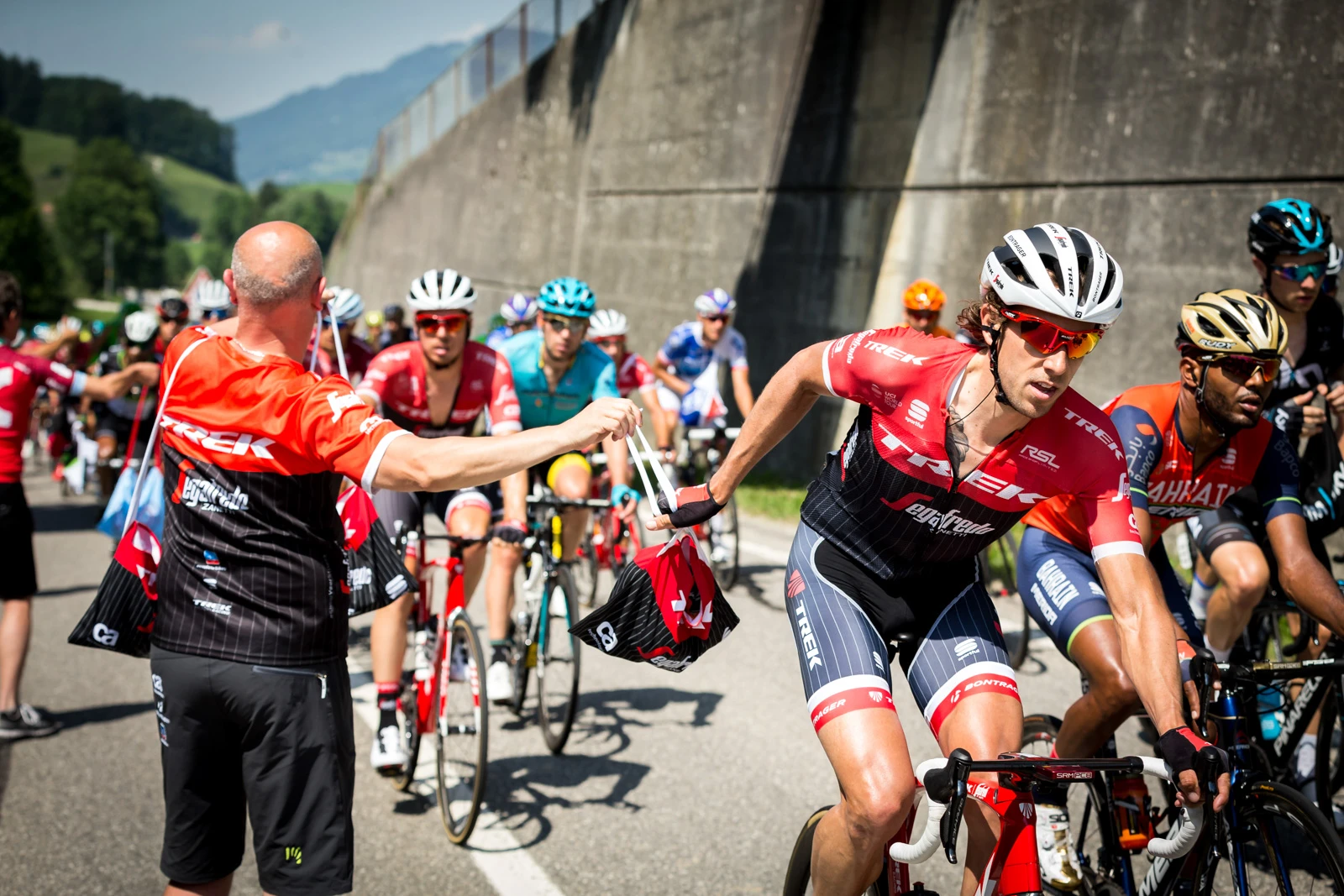

The original plan was for us to leapfrog the race once more and meet up with the team bus atop the mountain village of Villars-sur-Ollon. The heat though wasn’t forecast so Choppi and Cece made the call to do one last bottle drop at the base of the final climb. With helicopters swirling overhead, the last load of liquid was handed over, but by then we were at the back of the race. The road up to Villars-sur-Ollon was a narrow mountain pass, so offered no passing opportunities, and with every rider and his team on the road, the traffic was worse than Auckland rush hour.
With the crowds in full force, roads blocked and a maze of one-way Swiss roads, we finally got back to the team bus in last place. By this point, the team was running well behind schedule; the sportif was stressed and the soigneurs were copping an earful – with no consideration for the work they had done to keep the team fuelled during the day. It was 8pm before we got to that night’s hotel, and the poor old soigneurs’ work for the day was only just beginning to slow up.

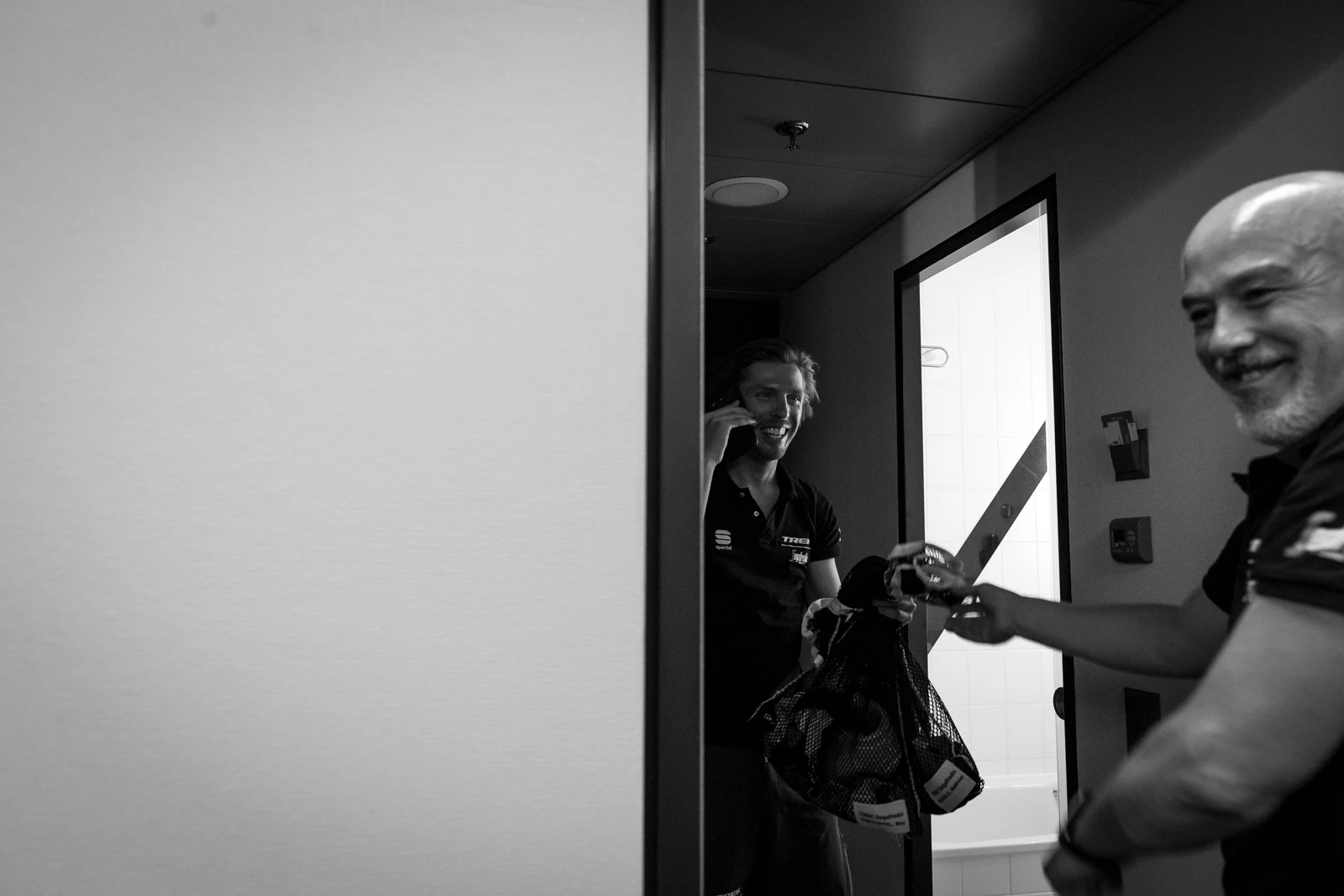
Stats: Trek Segafredo – Tour de Suisse 2017
– 9 stages
– 8 riders
– 8 race bikes + 2 spare bikes per rider – 24 bikes total
– 1 time trial bike per rider – 8 bikes total
– 1 team bus
– 1 mechanics’ bus
– 3 team cars
– 2 team mechanics
– 2 soigneurs
– 1 team doctor
– 1 media officer
– 4 additional team staff
– 196 bottles total per stage
– 32 gels total per stage





